Written by: Sara Dennis
This article is a repost of our original article, first published on February 1, 2021.
We’ve all seen manholes on sidewalks or in roads, but how often do we appreciate what they’re used for. To start, manholes are (covered) openings to confined spaces such as a utility vault, large vessel or a shaft. They are used to access underground public utilities, including sewers, water, electricity, storm drains, gas, telephones, and more. Utilities need to be accessed periodically to perform inspections, maintenance, repairs and updates. In this article, we’ll discuss manholes used to access sewer pipes.
A Brief History of Manholes and Sewers
Since we moved our sewer systems underground we’ve understood the need to inspect them to check if everything was flowing correctly. In the past, people used to install “lamp holes” which were 10-13” in diameter, as points along plumbing. These were too small to enter, but you could shine a light down into them to see if everything was flowing correctly. Manholes followed as a way to access gravity sewers, the term came from the need for “man-sized holes”. At first, manholes were made out of brick and mortar, but nowadays they’re more commonly made from concrete.
A manhole opened for inspection.
A tripod (used to lower the maintenance worker down into the manhole) set up over a manhole for inspection.
Function
As mentioned earlier, the primary function of manholes is for maintenance and inspection. Specifically, drains and pipes may need to be inspected, repaired and cleaned on a regular basis. Additionally, they may be used by engineers to help them change the flow direction within the sewer. Secondarily, manhole infrastructure helps the network of sewers “breathe” so to speak. Without adequate ventilation provided by the manholes, odors from sewers would be pushed back into people’s homes and businesses. Furthermore, it would be too dangerous for people who need to access, inspect and repair sewers, as the air becomes too toxic without ventilation.
Sanitary sewer system, showing a manhole’s placement between the source of the wastewater and the wastewater treatment plant.
Structure
Typical sanitary manhole structure.
·The lid covers the manhole so that pedestrians and vehicles don’t fall in through them. In the US, most manhole lids are round to minimize the risk of the lid falling down into the manhole, which could happen with square or rectangular lids.
The frame sits below the lid and is most commonly made out of 10” of cast iron metal. Sometimes adjustment rings are installed on top of the frame, which help the lid stay at grade when repaving or resurfacing the road or sidewalk where the manhole is. They can eliminate the need to reinstall the frame.
The chimney is the “neck of the underground space” (WinCan), sitting below the frame and above the majority of the underground structure. Because of its location, it’s often in worse shape than other parts of the manhole.
The cone is typically conical shaped, and widens down into the barrel parts of the manhole. There are typically three forms of cone that we see, conical centered (the middle lines up with the manhole lid), conical eccentric (the lid is off-center from the rest of the manhole), and flat-top (where there is no sloping cone, it ends at the chimney).
The barrel makes up the majority of the underground space. It is the widest point of the manhole, and sits between the bottom of the manhole and the cone. This can also be referred to as the wall of the manhole.
Many manholes also have steps in the chimney, cone and/or barrel section. These steps are usually plastic, metal or built-in to the manhole structure. In theory, steps can be used to enter and exit the manhole if needed, though some are in very bad shape depending on what they are made out of. Some municipalities have stopped installing steps in manholes to ensure they won’t be relied on for entry and exit.
Some manholes have a bench at the bottom between the walls of the manhole and the sewer pipe. The bench is meant to help direct flow back into the channel if a back-up occurs. Maintenance workers can also stand on the bench while inspecting or repairing the manhole.
The channel sits at the bottom of the manhole and conducts the wastewater to flow from the incoming pipe to the outgoing pipe.
Gravity sewers (labeled as the “Outlet Pipe” in the Sanitary Sewer System graphic above) are sloped downwards to use gravity to carry their contents to the destination, in this case to a wastewater treatment plant.
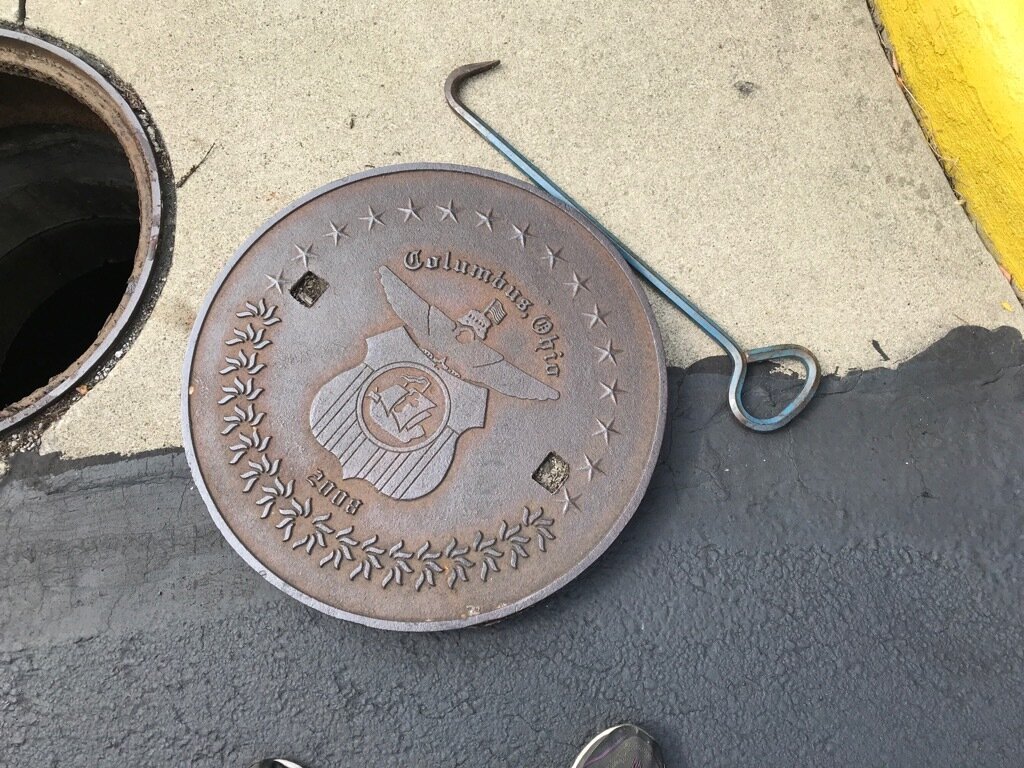
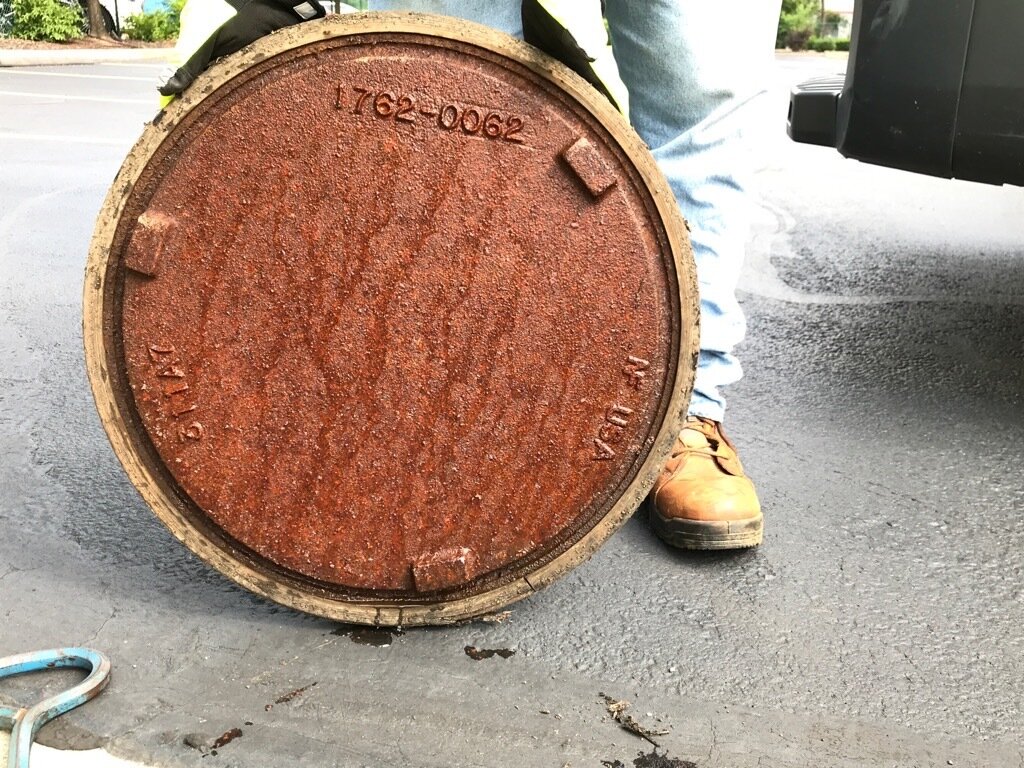
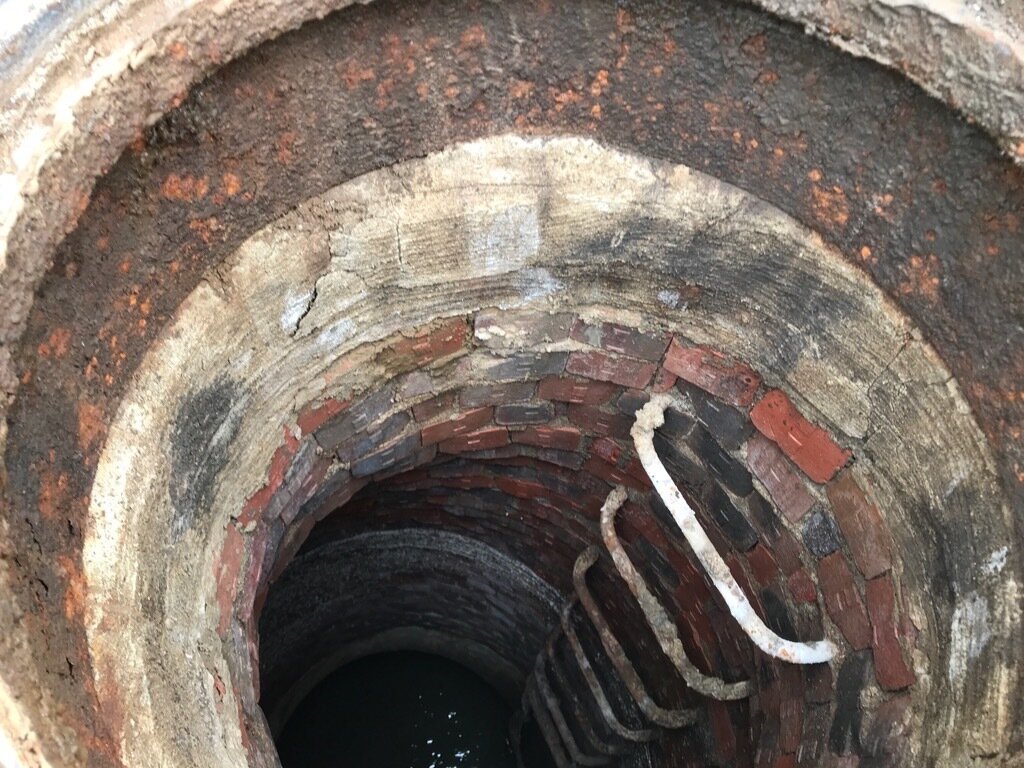
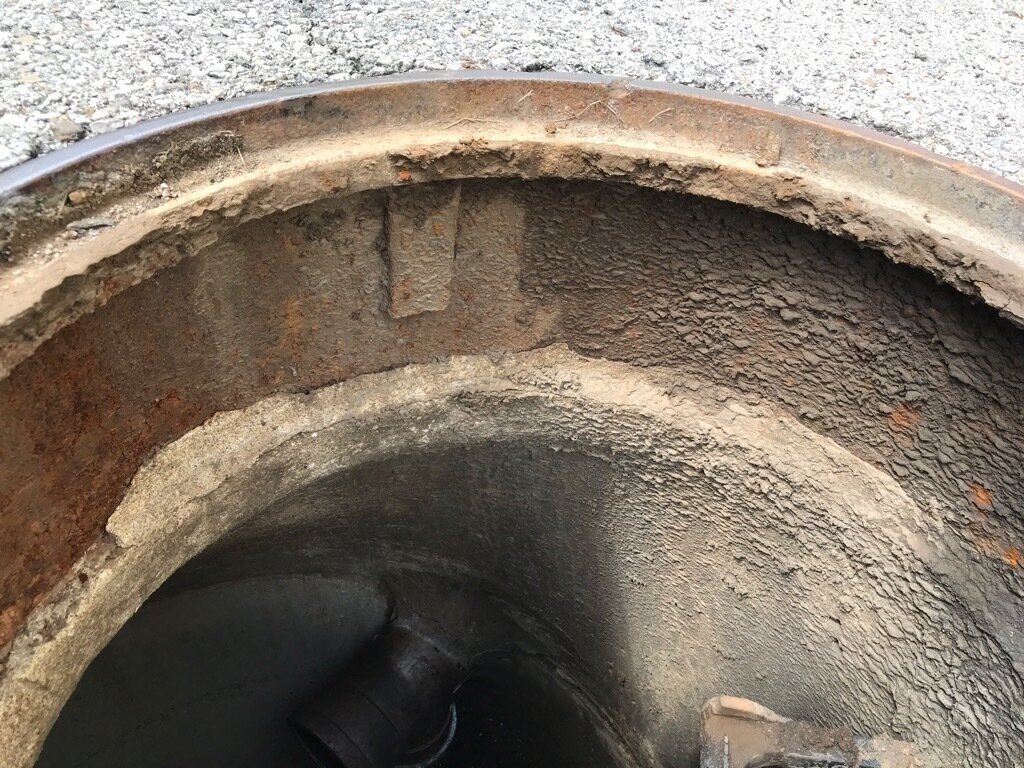
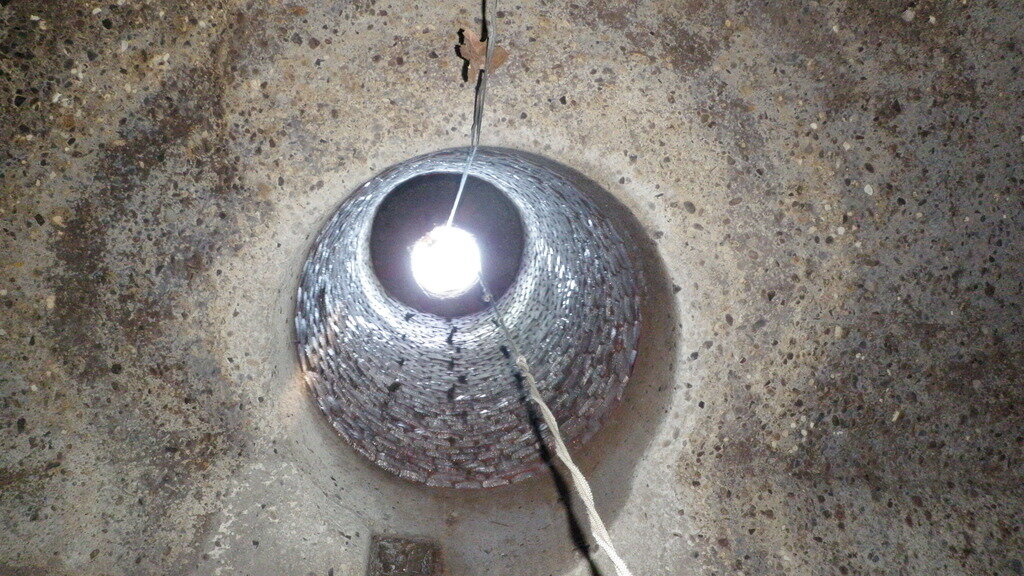
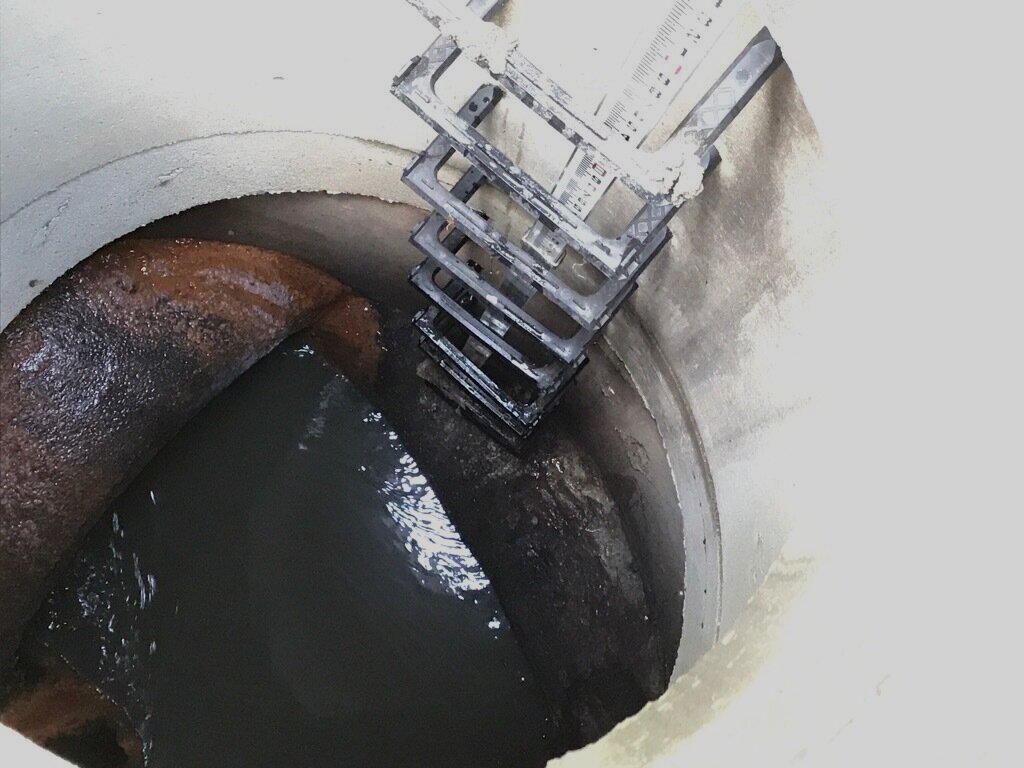
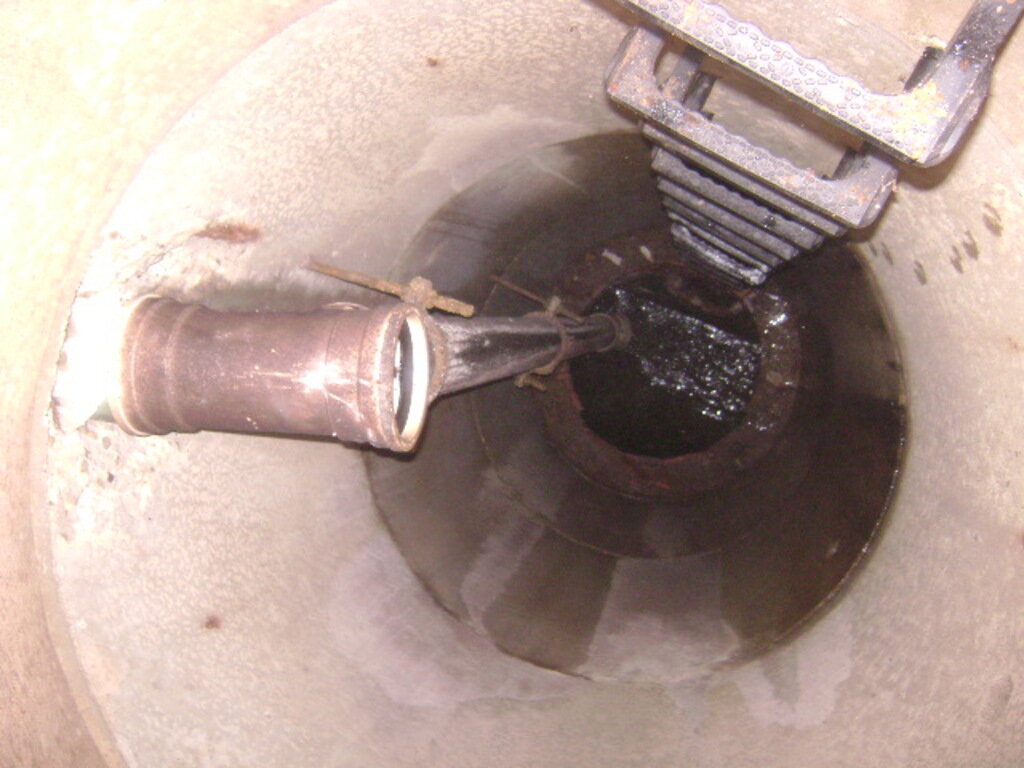
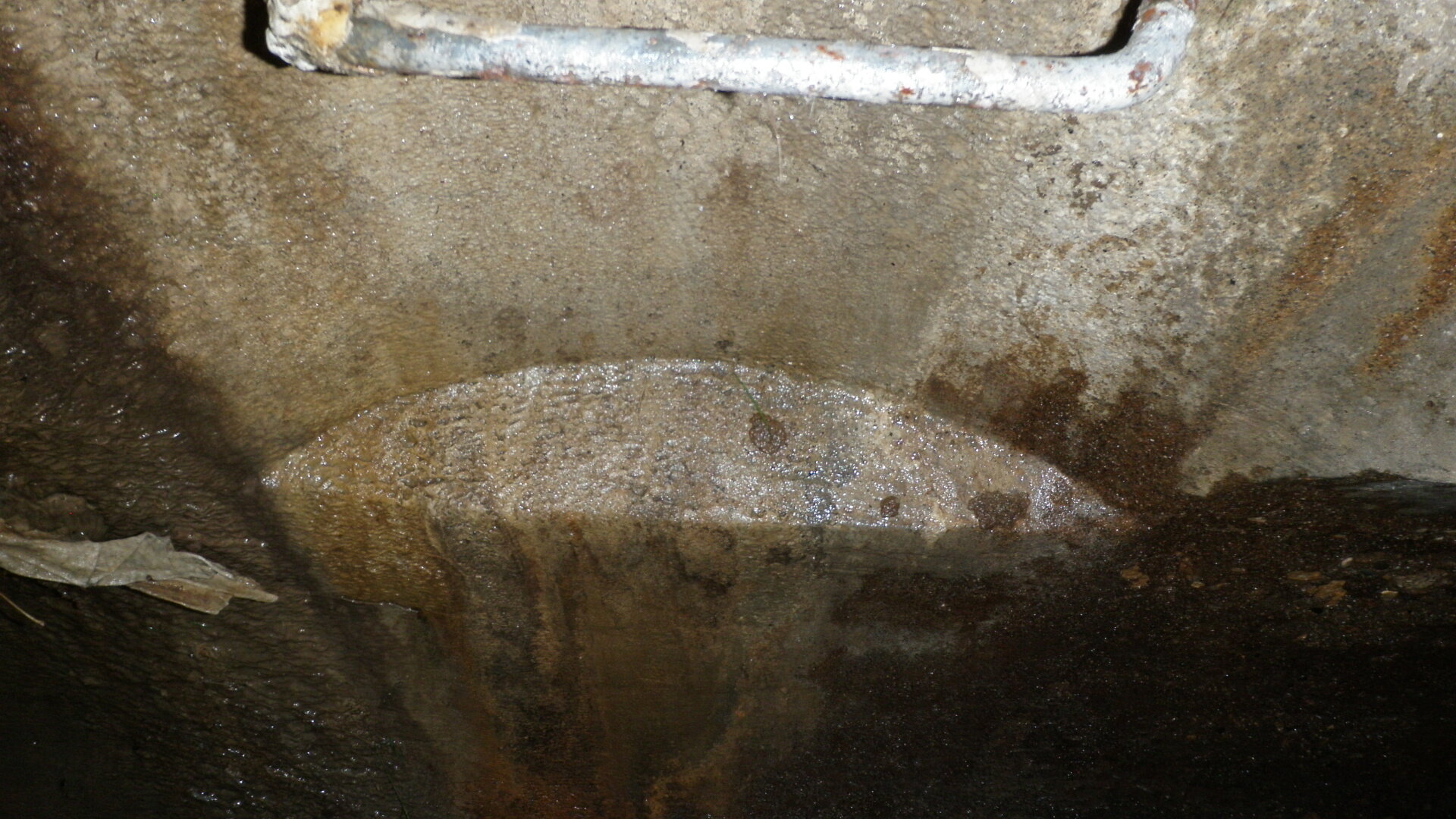
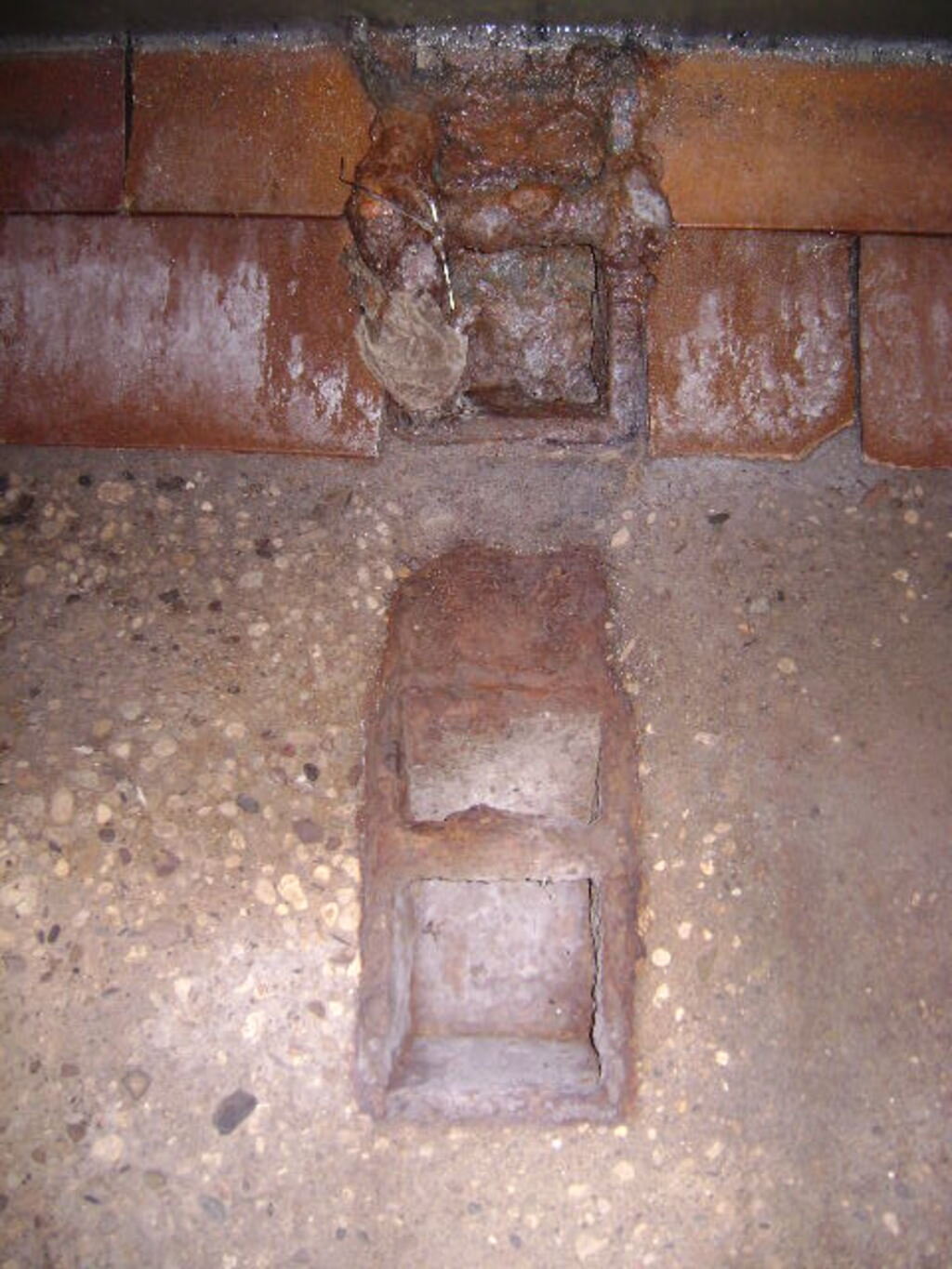
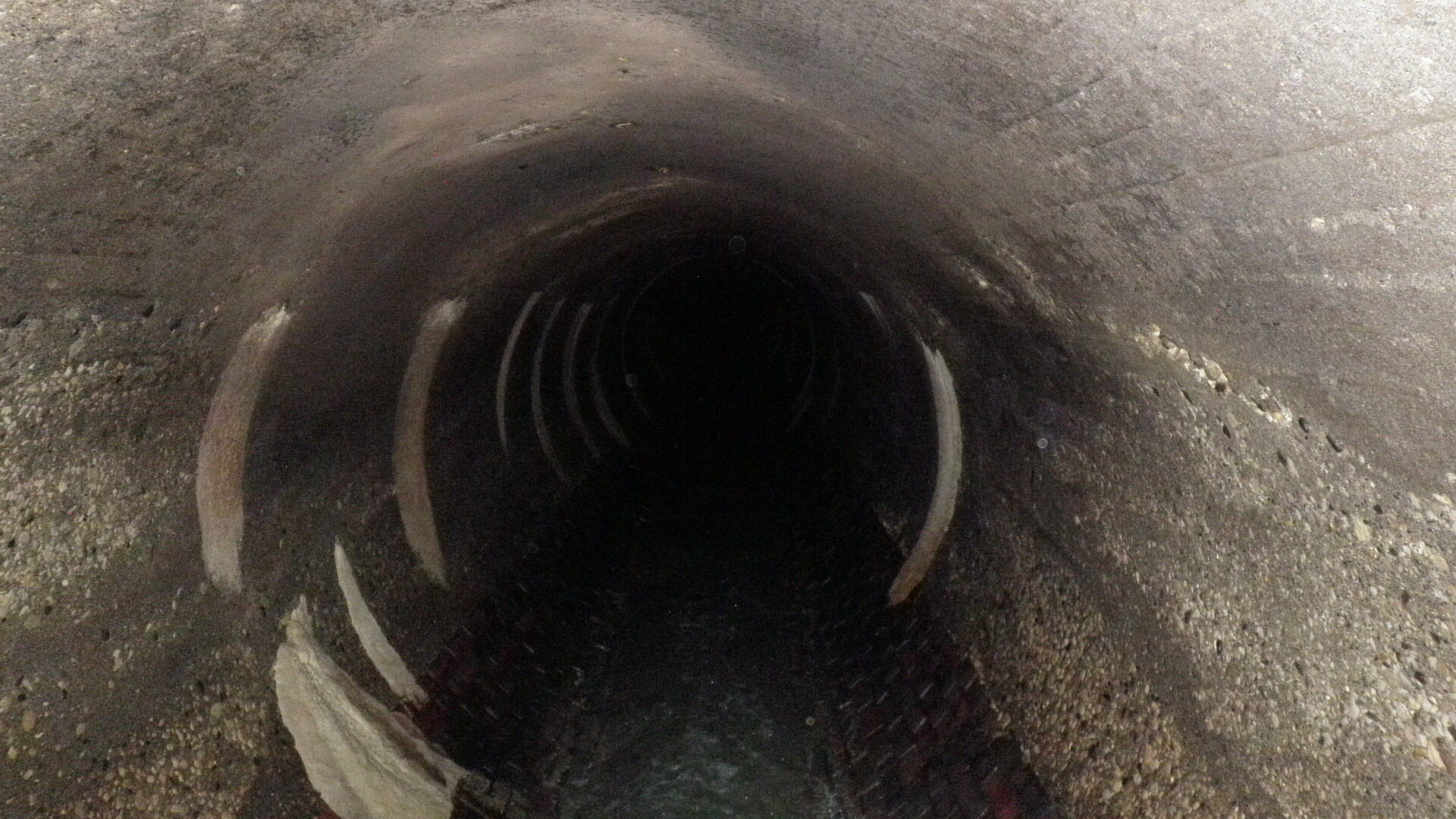
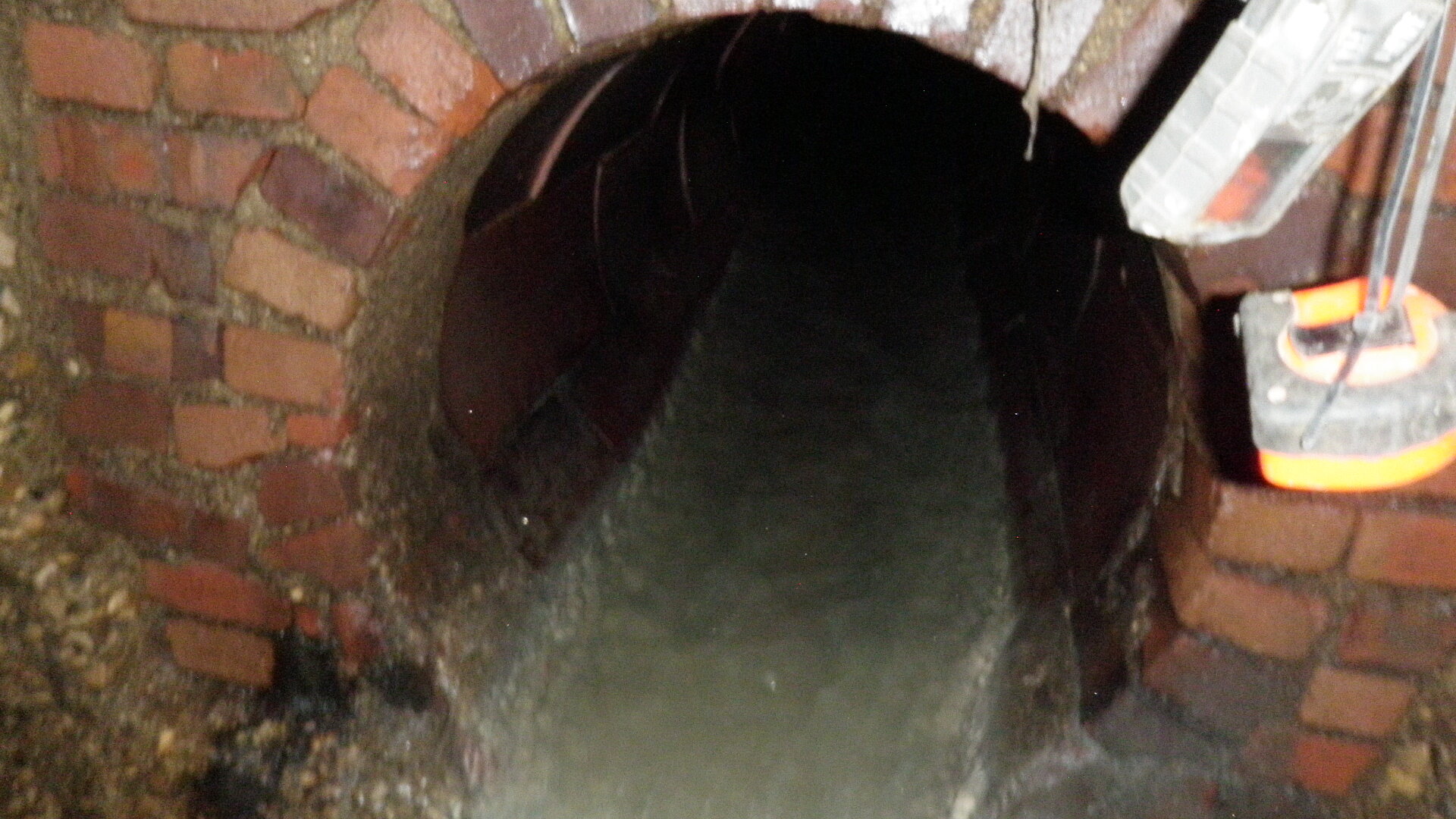
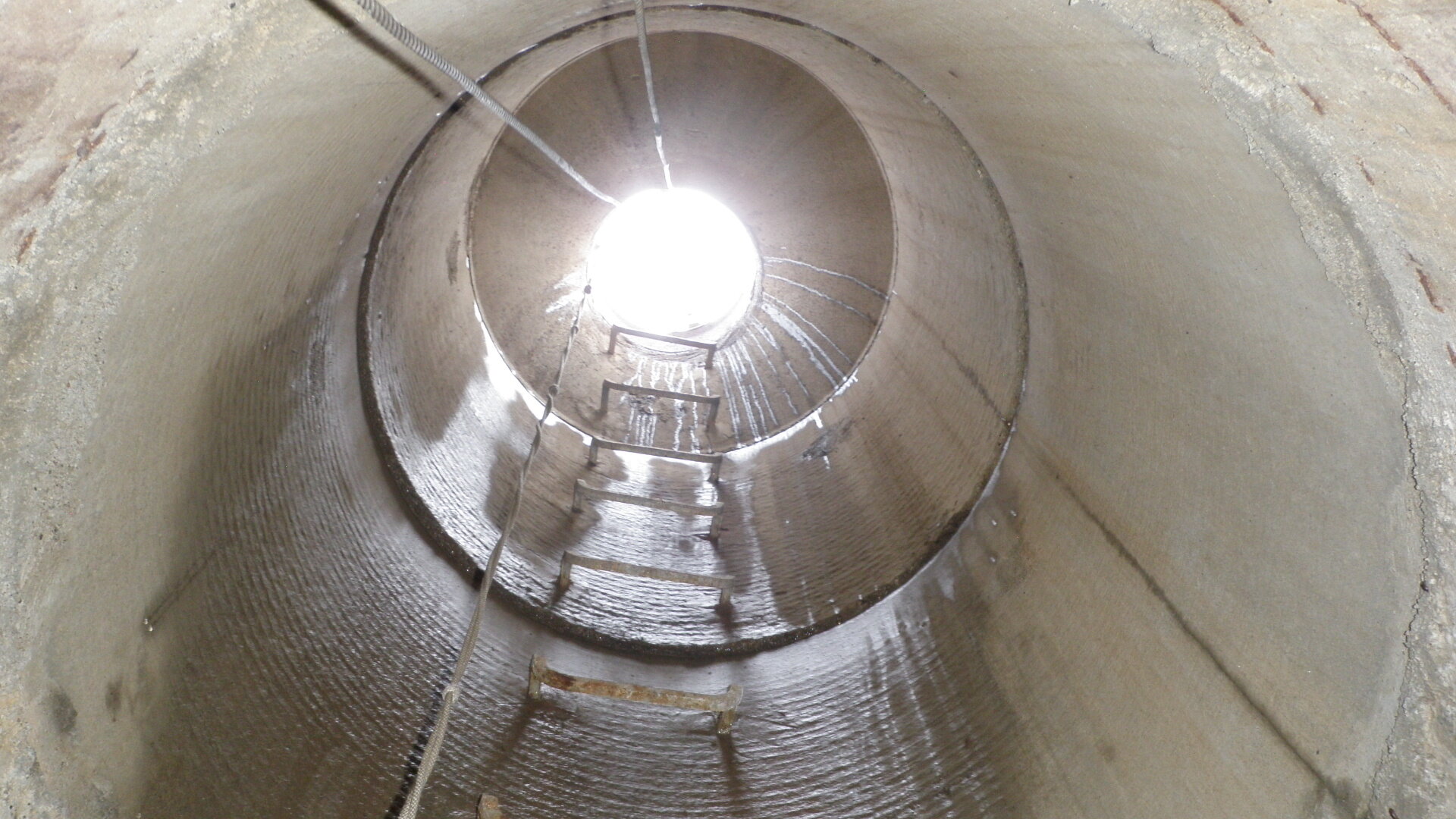
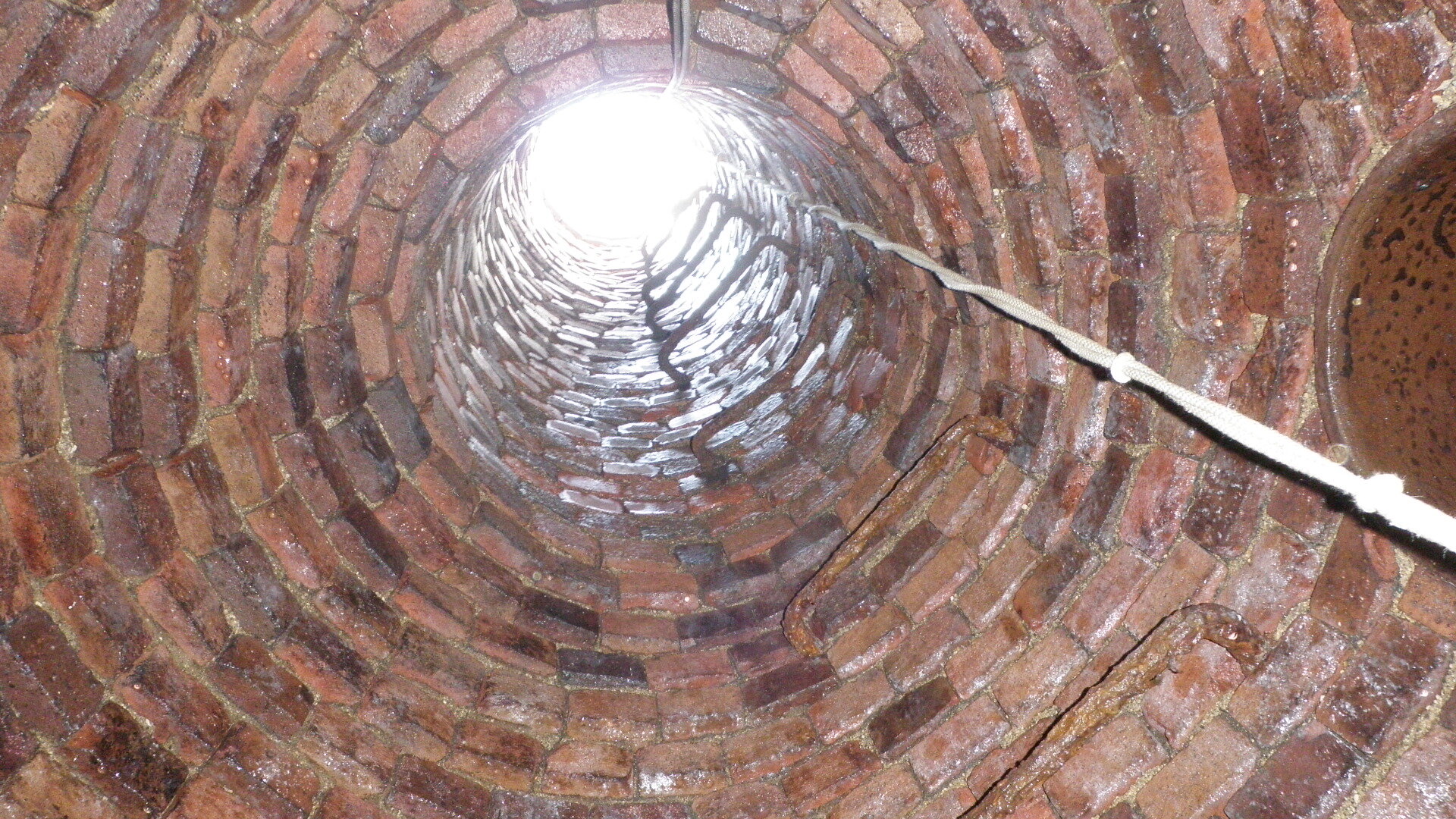
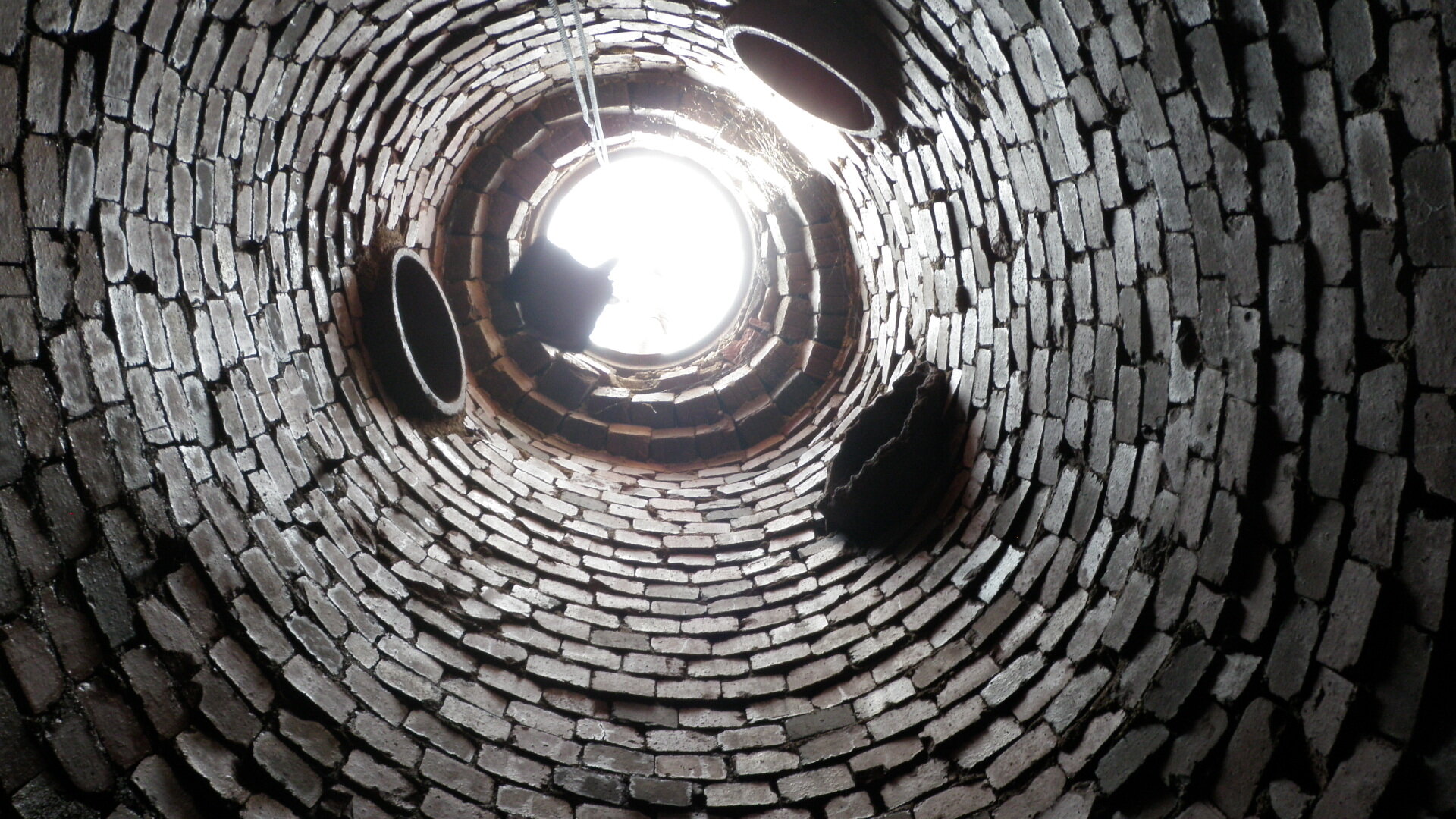
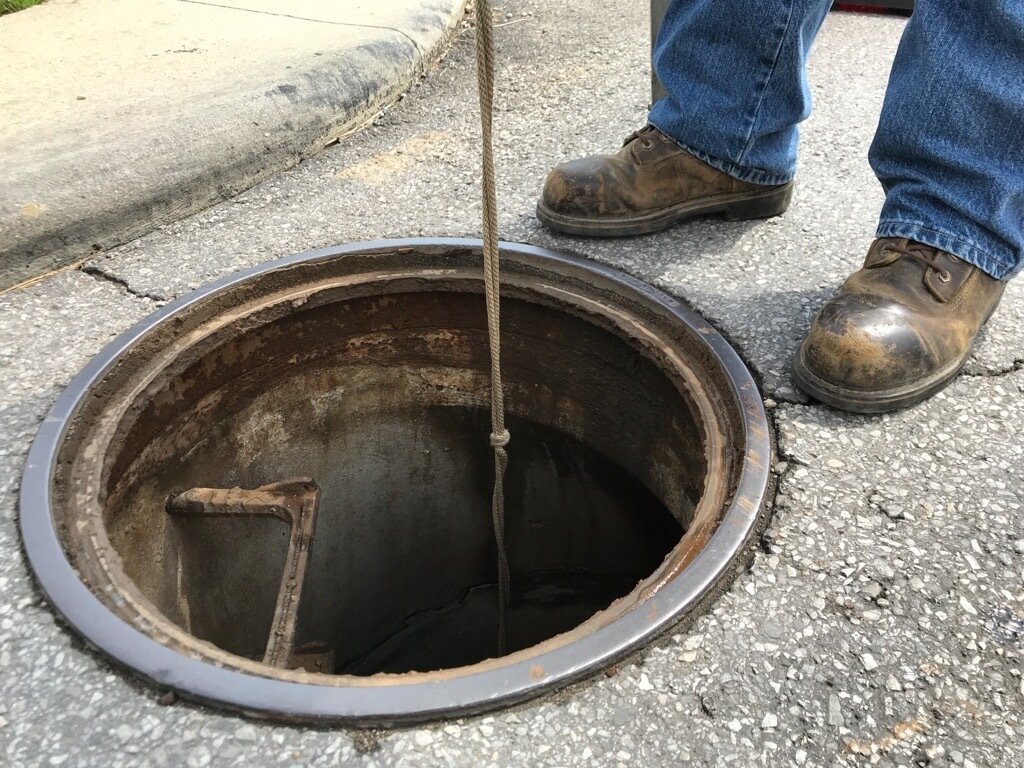
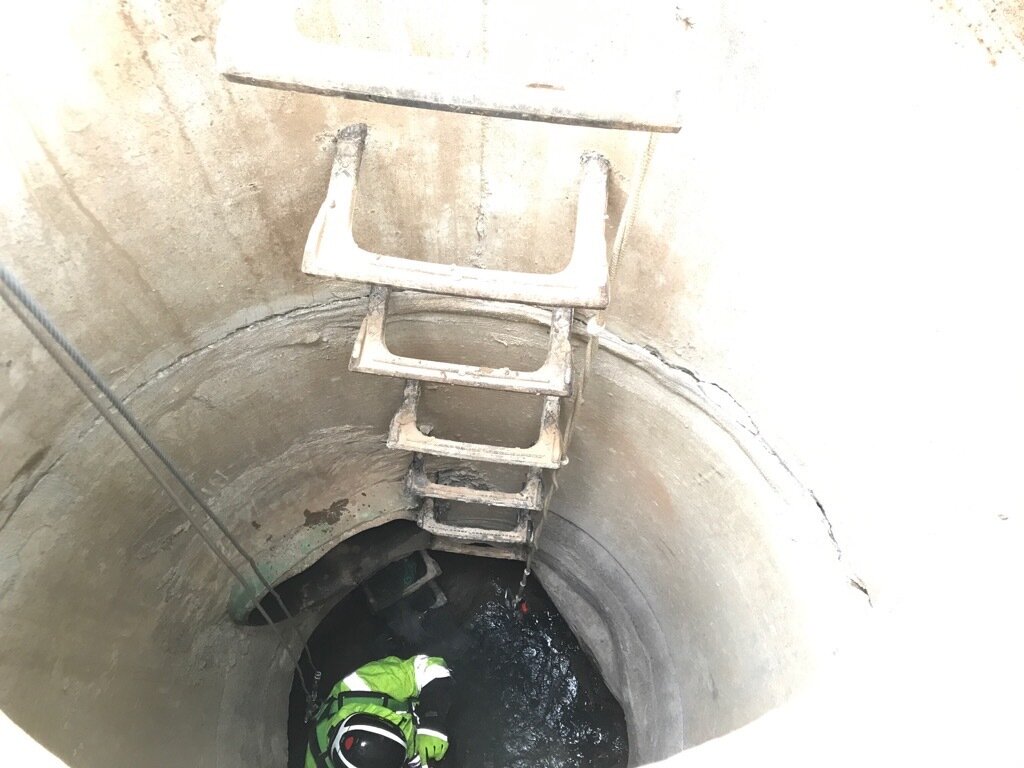
Manholes play an integral part in our day-to-day lives and the lid is just the tip of the iceberg. To learn more about wastewater infrastructure check out our articles about Water [and Wastewater] Infrastructure and Combined Sewer Systems.
Sources
1. Sullivan, Denise. “A Brief History of Manholes and Why We Need Them.” Trenchlesspedia, Trenchlesspedia, 23 Nov. 2018.
2. WinCan. “Sewer Basics: Parts of a Manhole.” WinCan, WinCan, 21 Jan. 2020.

